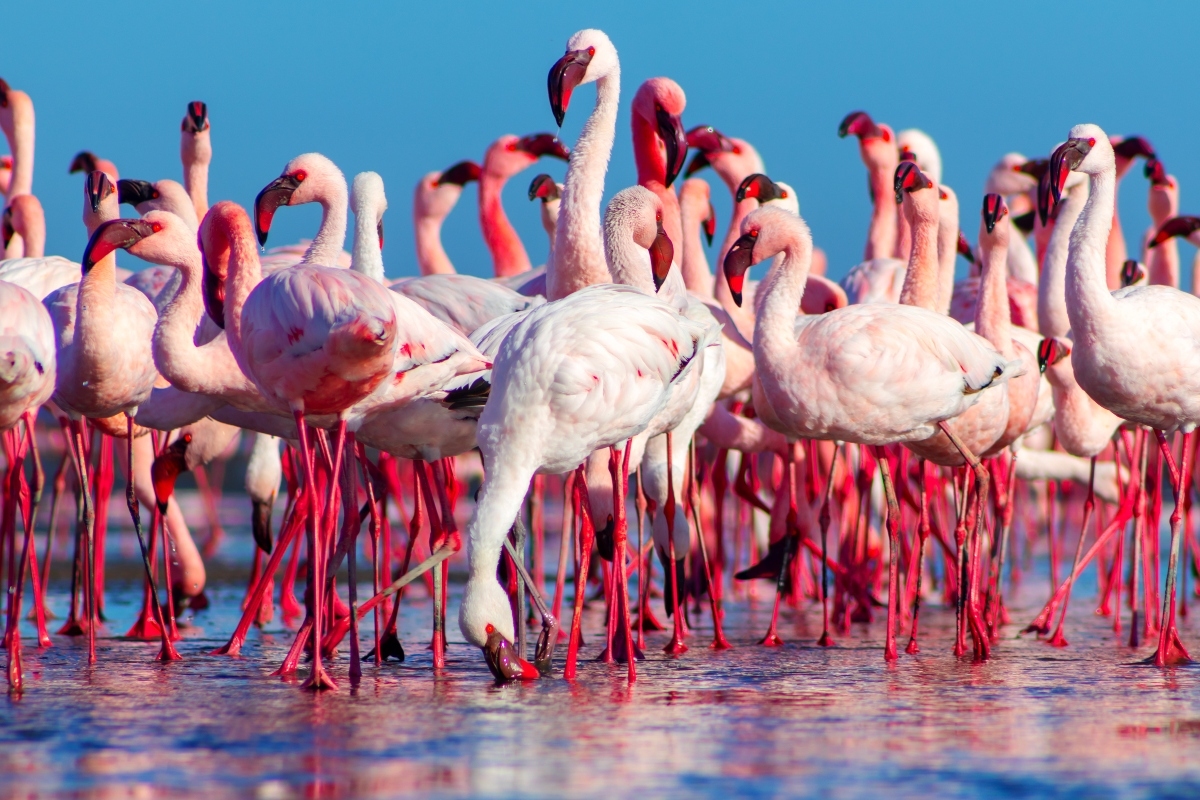With a splash of vibrant color and a posture that embodies elegance, Flamingos grace many of the world’s water bodies, presenting a sight that is nothing short of mesmerizing. Belonging to the family Phoenicopteridae, Flamingos are renowned for their bright pink plumage, which stands as a stark contrast to the often blue or green backgrounds of their habitats.
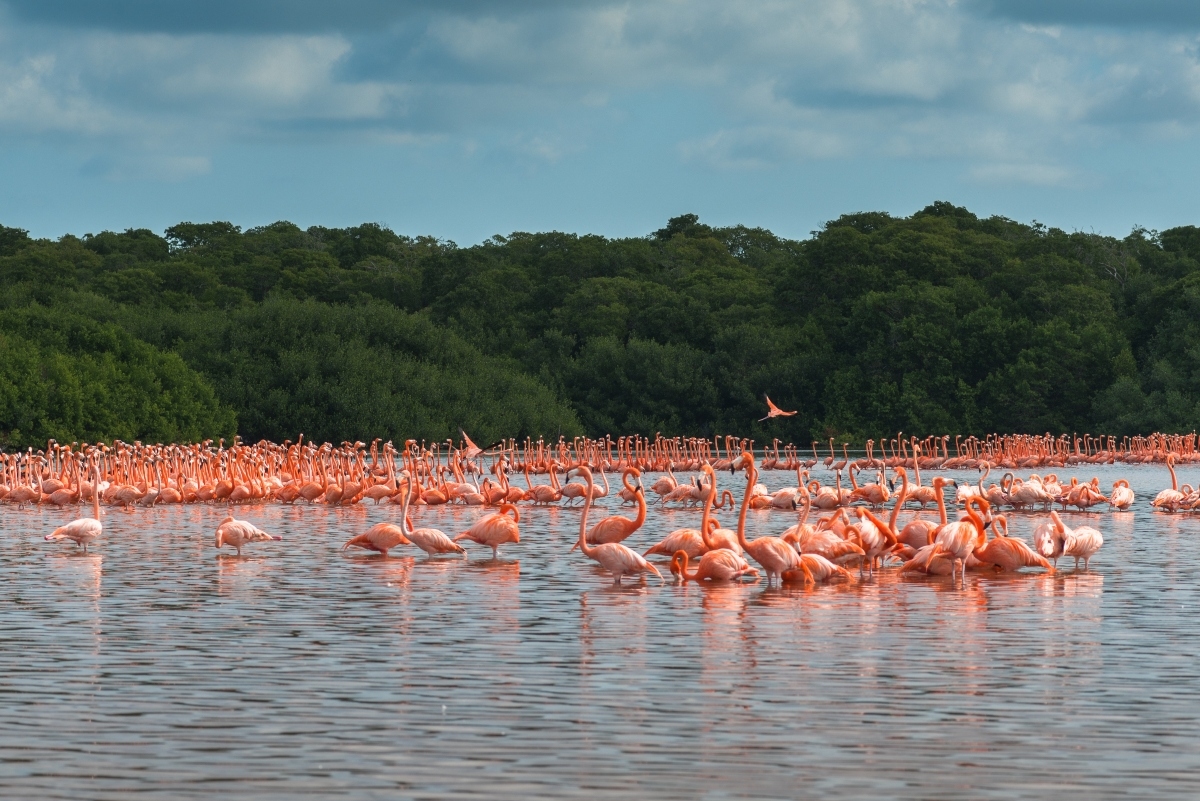
The Flamingo’s vibrant hue is a result of their diet, rich in beta-carotenes found in their primary food sources like blue-green algae and various crustaceans. This pigment is broken down in the liver and deposited in the feathers, skin, and egg yolks, giving them their iconic pink color. Interestingly, young Flamingos hatch with grey feathers, which gradually turn pink over a period of two to three years as they incorporate more of these pigments through their diet.
Inhabiting regions ranging from Africa, Asia, the Americas to Europe, Flamingos favor environments like lagoons, mudflats, and lakes with saline or alkaline water. These locales often support the growth of microscopic organisms that form the bulk of the Flamingo’s diet.
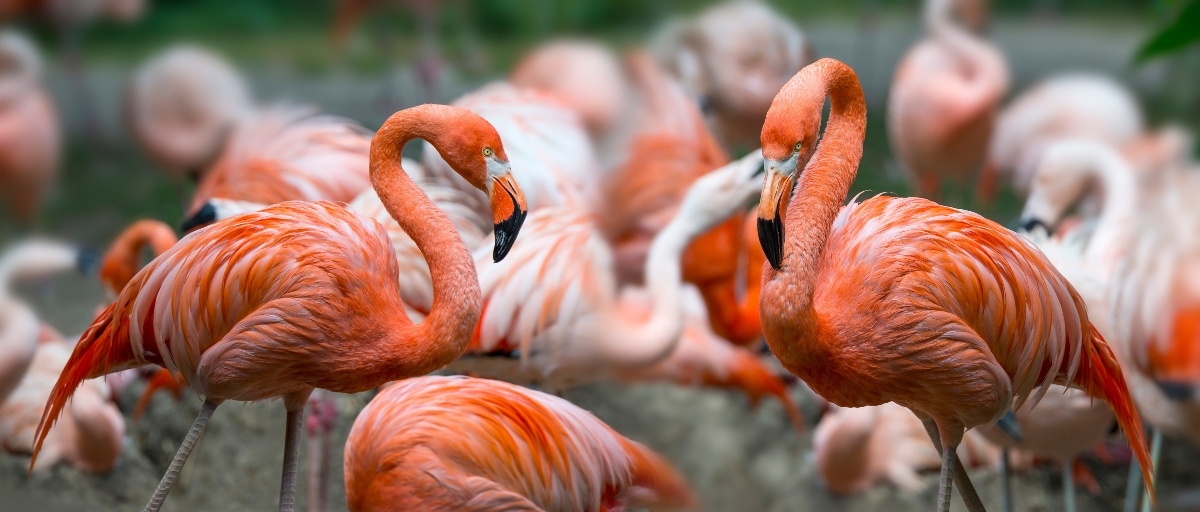
Standing tall with Stilt-like legs that can measure up to 50 inches, Flamingos exhibit a rather unique feeding behavior. They feed with their heads lowered, immersing their specially adapted bills in water to filter feed, a technique where water is sucked in and expelled, leaving behind the food particles trapped by their bristle-like structures called lamellae.
Flamingos are social birds, known to live and breed in colonies that can number in the thousands. This not only provides safety in numbers but also a spectacular view during group displays, where synchronized movements create a fluid wave of pink, white, and black across the landscape. The courtship and mating rituals are orchestrated performances, involving coordinated group displays that involve head-flagging, wing-saluting, and vocalizations.
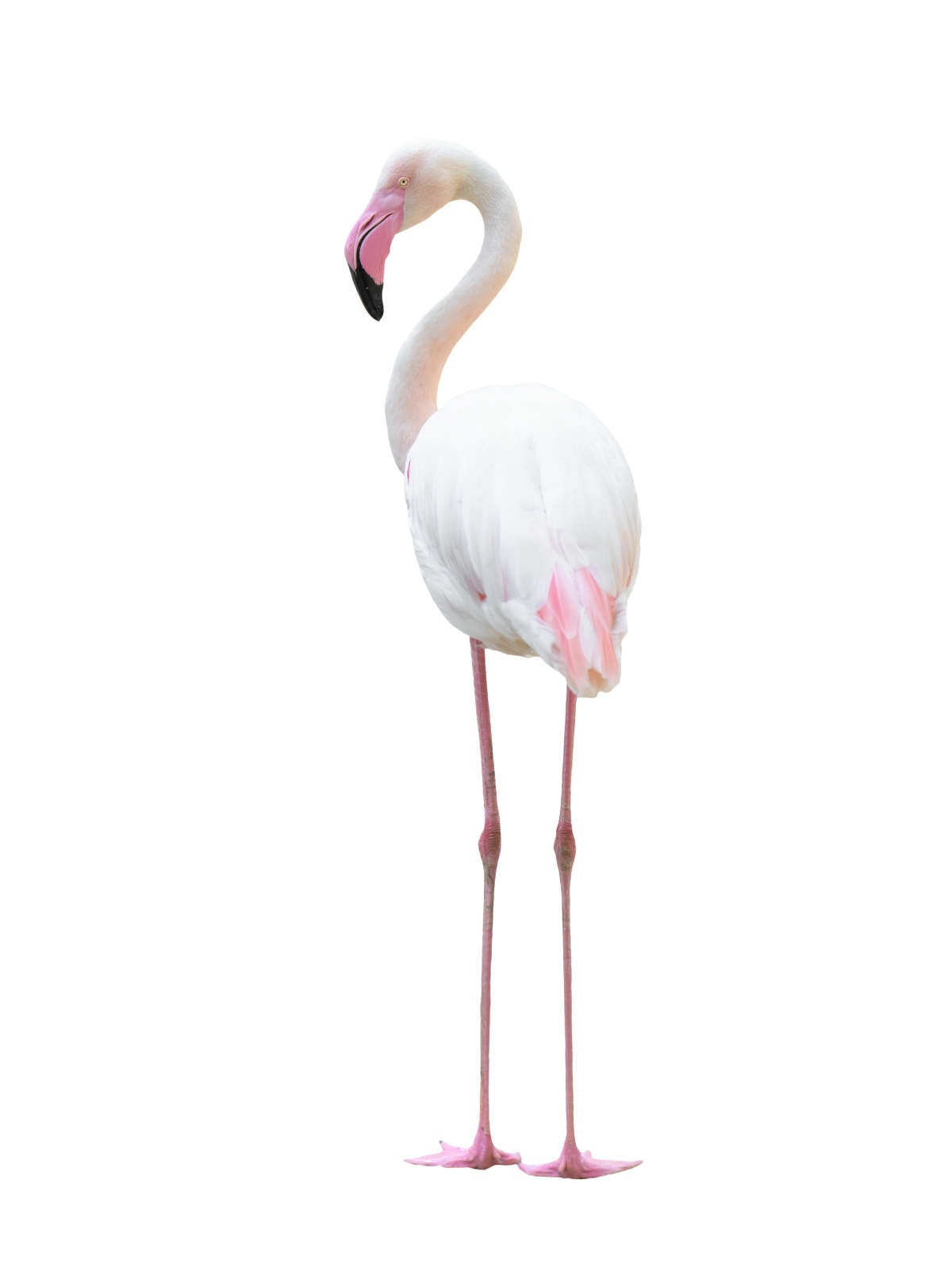
Breeding and nesting in colonies, Flamingos construct mound-like nests out of mud, where a single egg is laid. Both parents take turns incubating the egg, and upon hatching, they feed the chick with a nutrient-rich secretion known as ‘crop milk’.
Despite their graceful appearance, Flamingos are known to be strong fliers, capable of traveling considerable distances between habitats. Their flight, with necks and legs extended, forms an iconic image against the sky, with the coordinated flock movements resembling a dynamic, airborne ballet.
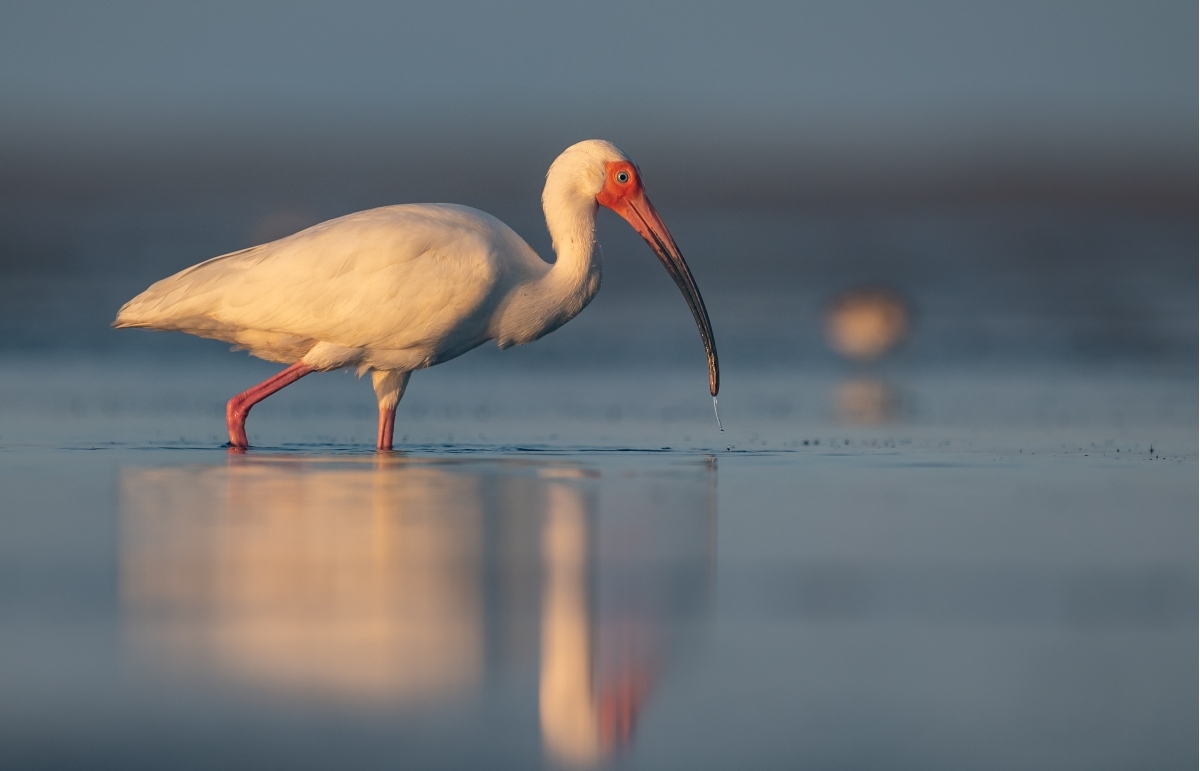
In various cultures, the Flamingo symbolizes beauty, balance, and grace, often associated with the feminine, the exotic, and the vibrant. Their striking appearance has found a place in art, decor, and fashion, continuously inspiring creativity and a love for the natural world.
In the sphere of bird watching and avian research, the Flamingo stands as an epitome of the beauty and complexity found in nature. Their vibrant presence, intricate social structures, and breathtaking group displays are ongoing sources of fascination and inspiration, reminding us of the flamboyant and harmonious aspects of the avian world.
